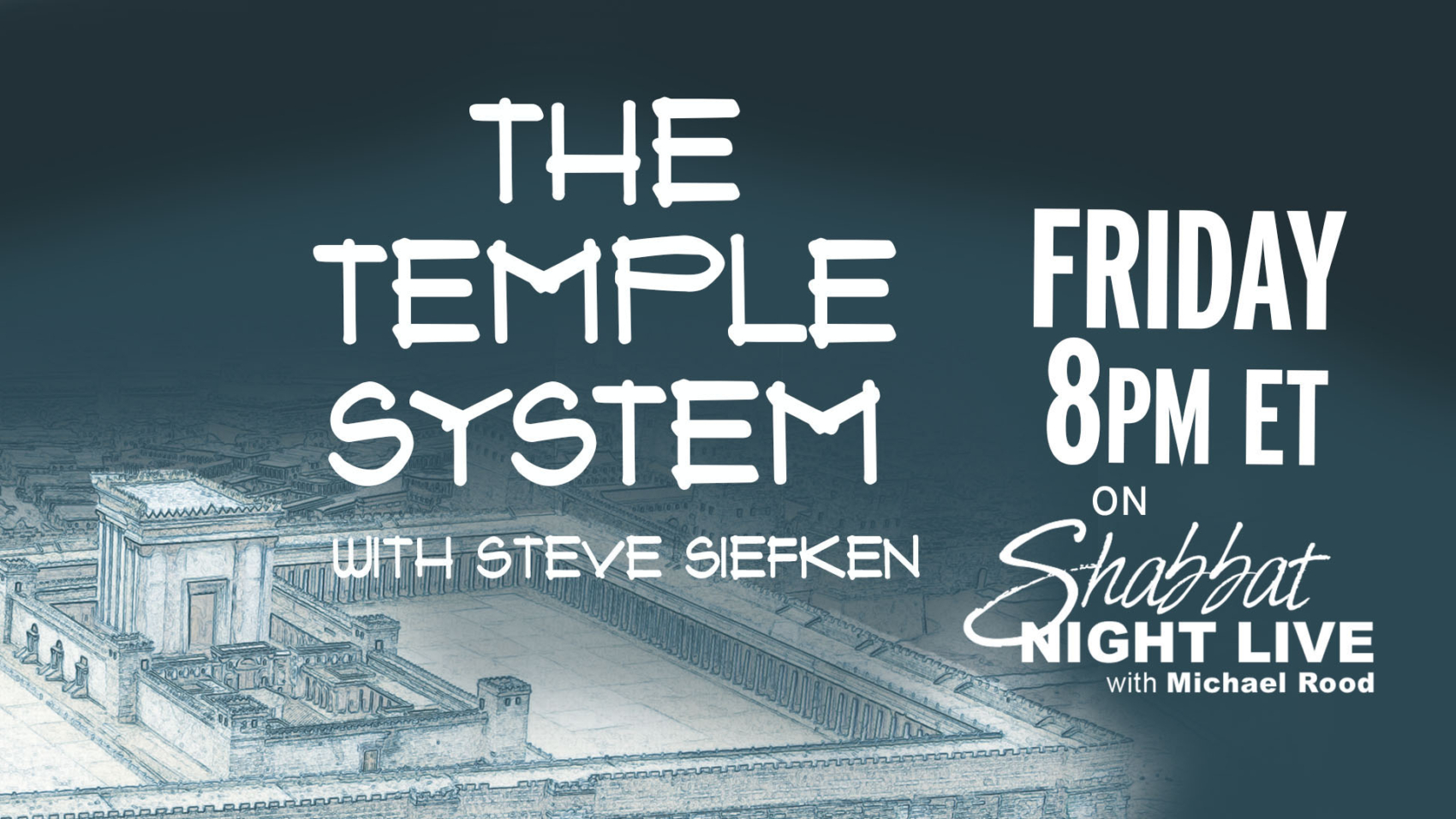EPISODE 1 of 5: A Day in The Temple
This week (June 30) on Shabbat Night Live, the Torah gives detailed descriptions of everything in the Temple. Every piece had a specific purpose for Israel’s religious ceremonies. But each piece had everyday uses as well.
Steve Siefken brings an enlightening perspective on the ordinary practicality of the Temple, many aspects of which we still use today.
Watch the episode — included on this blog post.
While you watch, consider the questions below. The timeline for each discussion topic in the video is noted on each question. Post your answers in the comments section and let’s get some discussion going!
- (VIDEO TIMELINE: 16:00) Why have such vital elements of our Judeo-Christian culture as the tabernacle of Moses and the history of the first and second Temples received so little attention and exploration in postwar religious education environments, whether denominational or home-based? How does this gap in information serve to weaken much evangelical pursuit of learning and personal witness?
- (VIDEO TIMELINE: 20:00) Similarly, how have many believers over time lost their perception of the dynamic between the letter and spirit of the law, whether in reference to the Torah or more generally in their approach to scripture? How can this be viewed as a factor in much of the oversimplification that occurs in the private evangelism that emphasizes selective principles drawn from scripture instead of established and historically verified doctrine?
- (VIDEO TIMELINE: 24:00) How have latter-day controversies over the public posting of the Ten Commandments served to dramatize the distinction between earthly, manmade regulations and spiritual priorities? How do the first four commandments admonish the faithful to distinguish between these loyalties in the pursuit of salvation? How can this be said to have motivated the often savage backlash against spirituality in contemporary public policy and advocacy?
- (VIDEO TIMELINE: 28:00) How does our longstanding distinction between church and state serve to undermine our awareness of their inseparable ethos in the history and culture of the ancient Hebrews? How can Yeshua’s seeming endorsement of this separateness in his admonishment to “render unto Caesar” actually be interpreted as an indirect reference to the kingdom of YeHoVaH that we are obligated to maintain as professed believers?
- (VIDEO TIMELINE: 32:00) How does the current reflex toward a one-world government indirectly underscore the Bible’s many references to “nations,” irrespective of size or scale of communities or civilizations? Do apprehensions over the possible loss of this phenomenon in today’s free world suggest an eventual revival of the nation-state as an alternative model, or is our cynicism over “limited” government such that this is no longer viable?
- (VIDEO TIMELINE: 36:00) How likely are various grassroots evangelical efforts throughout the Christian world to effect a more enlightened public perception of the inherent spirituality of our nation’s founding? What are some examples of contemporary policy and activism that recall the fundamental weakness of collectivist and atheist governments whose orientation toward materialism served to ensure their eventual downfall?
- (VIDEO TIMELINE: 40:00) How do many contemporary believers reveal a pervasive ignorance of both the literal definition of “tabernacle” as exemplified by the ancient Hebrew culture and its range of significance as a locus of received wisdom, sacrifice, and worship? How has this grounding in devotion and ritual been corrupted in the postwar period by attempts to reconcile church design with secular or commercial elements in an effort to be progressive or relevant?
- (VIDEO TIMELINE: 44:00) How has the significance of the brazen laver virtually disappeared from our Western approach to worship? How has the streamlining of ritual in much evangelical and denominational Christianity deprived our culture of the significance of purification while in the presence of YeHoVaH, to say nothing of its importance to germ prevention, which has helped to sustain our divinely-given lives?
- (VIDEO TIMELINE: 48:00) Similarly, how have the inner reaches of the tabernacle as a place for a ritual meal for the priesthood been virtually forgotten by many worshipers owing to a compulsion to innovate with such liturgical practices as communion? Moreover, how has the reverence illustrated by the reflected light of the golden menorah been undermined by utilitarian church design that often proves to be embarrassingly short-lived?
- (VIDEO TIMELINE: 52:00) Finally, how has the Mercy Seat within the Holy of Holies suffered the questionable treatment of historical revisionists who have sought to challenge its significance for the presence of YeHoVaH? What is the essential futility of linguistic efforts to reduce it to a symbol-laden cover for the Ark of the Covenant, or facile scientific attempts to portray it as a prototypical device such as a storage battery?
